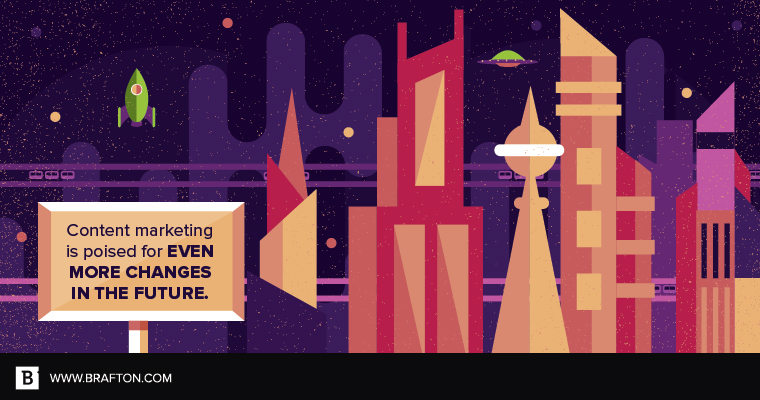As one Nobel laureate put it many years ago: “The times they are a changin’.”
I think we can all agree with Mr. Dylan. The times are quickly changing. And while Bob most likely was not referencing the state of marketing in his famous song, the truth is that content marketing is evolving and growing at an impressive rate.
The golden days of traditional marketing were all about radio, TV and print ads as well as direct mailings and cold calls. This type of marketing, though, has mostly been phased out, and digital marketing now stands in its place.
The internet has given marketers an incredible opportunity to reach prospects like they never have before. But when you think of digital marketing, do you consider content marketing a part of it? Most likely, yes.
But we’re here to say that content marketing isn’t a part of digital marketing – it IS digital marketing. Why? Well, the power no longer lies mainly with brands. Instead, with the emergence of the internet and content, and their increasing role in purchasing decisions, that power has now shifted over into the fingertips of prospects.
The content that businesses produce goes a long, long way at helping prospects further along the sales funnel. And it’s for this reason that content marketing is now digital marketing, which is now marketing.
Content marketing isn’t part of digital marketing – it IS digital marketing.
How content marketing has grown
It’s good to start at the beginning. As briefly stated above, today’s content marketing sprouted out of the fast growth of the internet. Content itself has been around for quite a while, but it had never been really tied to the aspect of marketing.
 That is, until the internet – and search engines – came along. Instead of companies reaching out to potential customers, it turned into businesses bringing those prospects in through effective content. And while it took some time to catch on, content marketing is now the name of the game.
That is, until the internet – and search engines – came along. Instead of companies reaching out to potential customers, it turned into businesses bringing those prospects in through effective content. And while it took some time to catch on, content marketing is now the name of the game.
Now, through websites, social media, emails and organic search, brands are able to promote their content to the right audience at the right time.
Businesses in all industries and of all sizes are increasingly implementing content marketing strategies – 86 percent of B2C brands and 93 percent of B2B organizations use content marketing.
It seems as though we’ve reached the “pinnacle” of content marketing, and that this is the way of marketing life from now on. Well, yes and no. Yes, content marketing is the most effective way for companies to reach prospects and bring in new customers. But no, content marketing hasn’t reached its peak, and in fact, still has some growing to do.
How it’s maturing
There are many signs that content marketing is poised to make even more changes.
One is in the fact that people are more than ever researching products and services before they make a purchase. Chances are at some point you’ve looked at reviews, testimonials or some other form of content before buying something online.
But take it a step further: Have you ever been in a brick-and-mortar store and pulled out your smartphone to research a product? I definitely have, and I’m sure you have, too. So what does this mean for marketers? It means your content is the first impression that potential customers get from your brand – whether they are shopping online or in an actual store.
Also, people are increasingly turning away from advertisements. In fact, the world’s most widely used ad blocker, Adblock Plus, has been downloaded more than 500 million times. And when asked why they use an ad blocker, 64 percent of respondents said it’s because ads are annoying and intrusive.
People are tired of having sales materials shoved down their throats. Instead, what they want is content marketing that provides value, is engaging and answers their questions.
Your mature strategy
So what does this mature state of content marketing look like for brands? Well you’ve got to create a strategy that is focused not only on providing value and engagement, but also on ROI.
Your strategy needs to give potential customers that great first impression no matter where they are in the buyer’s journey. This includes:
- Strong copy for every asset in the funnel.
- A robust company blog that offers thought leadership and industry insight.
- Downloadable assets such as white papers and eBooks that provides readers with more in-depth, analytical viewpoints.
- A cohesive and engaging user experience across your desktop site, mobile site, social media networks and emails.
- Email marketing and automation methods that promote your content to the right prospects.

These content components will give you the tools you need to provide that much sought-after value for your target audience, which in turn will significantly boost your ROI.
So buckle up and get ready for the ride. Content marketing has already made great strides and changed the entire face of the industry as we know it. But there’s still more to come.





